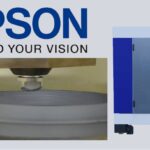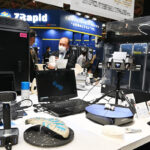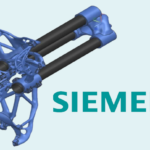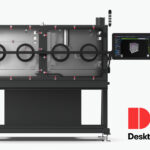ASIA ELECTRONICS INDUSTRYYOUR WINDOW TO SMART MANUFACTURING
Innovative Tech to Make More Reliable 3D Printing
Mitsubishi Electric Corporation, Magnesium Research Center (MRC) of Kumamoto University, TOHO KINZOKU CO., LTD., and the Japan Aerospace Exploration Agency (JAXA) have sealed a collaboration on 3D printing technology.
The consortium will offer the first1 high-precision additive manufacturing (AM) technology. Specifically, using magnesium alloys in a wire-laser metal 3D printer via the directed energy deposition (DED)2 method. This marks a significant leap forward in industrial manufacturing.

More Efficient Production
The potential to process magnesium alloys with unparalleled precision and complexity will unlock many possibilities. Particularly, paving the way for rocket, automobile, aircraft, etc. components that are lighter and stronger than those made of iron or aluminum. Hence, this will lead to improved fuel efficiency and reduced production costs.
In addition, the envisioned production processes based on a wire-laser metal 3D printer will be more energy efficient. At the same time, it will generate fewer greenhouse gas emissions compared to conventional processes. Thus, promising to deliver low-impact solutions for increased sustainability.

Since September 2022, the consortium members have been conducting joint research (Research on Laser Wire DED Method AM Process Technology Using Magnesium Alloy Wire) under the framework of JAXA’s Innovative Future Space Transport System Research and Development Program,3. Specifically, working to reduce the weight of rockets and thereby drastically cut costs.
In addition, aside from rockets, the need for weight reduction has increased in recent years due to factors including the shift to electric vehicles and the growing demand for commercial aircraft. Thus, magnesium alloys are attracting attention in many fields.
However, typical process for magnesium alloys involves die casting4, making it difficult to create structures with hollow interiors. Also, the mainstream powder bed fusion (PBF)5 method for AM can lead to degradation through oxidation or dust explosions, posing a problem for safe manufacturing.
Formidable Features
In response, the consortium combined Mitsubishi Electric’s metal 3D printer, which uses the wire-laser DED method and metal wire instead of metal powder as a material. It comes with a highly non-flammable KUMADAI heat-resistant magnesium alloy6 developed by MRC. In tests, Mitsubishi Electric repeated the molding process with the KUMADAI heat-resistant magnesium alloy produced by TOHO KINZOKU using advanced wire drawing technology. The result is a new technology that uses a magnesium-alloy wire as an AM material and precise temperature control to prevent combustion.

Based on JAXA’s evaluation of AM production samples produced with this new technology, it is estimated that some rocket parts could be made up to about 20% lighter than those with traditional aluminum alloy structures.
Furthermore, it is possible to apply the same process to other fields where weight reduction is also necessary. This includes various transportation equipment and robotic components. Accordingly, further research and development targeting applications in various industrial fields will be conducted in parallel with Mitsubishi Electric’s work to commercialize the technology in a wire-laser DED metal 3D printer by around 2029.
Notes:
1 According to Mitsubishi Electric research as of June 13, 2024
2 AM process that uses thermal energy to fuse materials as they are being deposited
3 Innovative Future Space Transport System Research and Development Program. https://www.kenkai.jaxa.jp/eng/research/kakushinyusou/kakushinyusou.html
4 Metal casting process that forces molten metal under high pressure into a mold cavity
5 AM process where a thermal energy source, such as a laser or electron beam, selectively fuses regions of a powder bed to form a solid part
6 Magnesium alloy developed by MRC that achieves superior strength and heat resistance
13 June 2024




